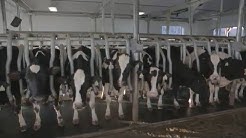Contents
 ‘Reuse carcasses and waste’ During the NGT meeting, officials proposed three animal rendering plants in the city, for which land had been identified and for which ₹15 crore under Nagarothana scheme …
‘Reuse carcasses and waste’ During the NGT meeting, officials proposed three animal rendering plants in the city, for which land had been identified and for which ₹15 crore under Nagarothana scheme …
Waste Solutions Memphis (WMC) – The Memphis Director of Public works is giving the city’s
Animal Carcass Disposal Options rendering • incineration • Burial • composting (nm1422 (revised)) animal mortality losses are a normal part of livestock and poultry production facilities. producers biohazard cleanup companies may have losses due to disease, accidents, inter-animal competition or natural disasters such as flooding or …
Rendering. Vehicles that haul carcasses for rendering services need to be inspected and permitted by the Board, unless the vehicle belongs to the owner of the animal. To prevent disease spread and keep roads clean, carcasses and animal parts are transported in leak …
Warwick Waste Management City Of Raleigh Solid Waste Management Need to contact someone from the
In Arkansas, a leading chicken-producing state, there are six ways growers can dispose of carcasses. Acceptable on-site methods include incineration, composting, extrusion (a heating method that makes …
Carcass Disposal: A Comprehensive Review National Agricultural Biosecurity Center Consortium USDA APHIS Cooperative Agreement Project Carcass Disposal Working Group august 2004 chapter 4 Rendering Authors: brent auvermann agricultural Engineering, Texas A&M University Ahmad Kalbasi Biological and Agricultural Engineering, Texas A&M University
Radioactive Waste Examples Radioactive waste is waste that contains radioactive material. Radioactive waste is usually
Overview of Disposal of Carcasses and Disinfection of Premises. The method of disposal should preclude contamination of soil, air, and water. Hides and other parts of animals that have succumbed to infectious diseases or toxins should be safely disposed of and not retained for use.
storage and disposal of carcasses. Generally, in epidemic outbreaks culling and rendering capacities represent two bottlenecks. Priority in the use of rendering plants may be fixed as follows: 1. …
